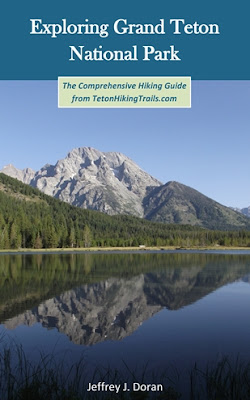Grand Teton National Park vegetation management specialists are once again engaged in habitat restoration projects in the park as part of a multi-phase restoration effort to replace approximately 4,500 acres of non-native grass fields with native sagebrush habitat. A healthy sagebrush ecosystem in Grand Teton is vital for the diversity and abundance of native plants and wildlife species like elk, bison, moose, pronghorn, and sage grouse that rely on them.
More than one hundred years ago, homesteaders converted large swaths of sagebrush habitat to hayfields for their livestock. Over the past century, the converted pastures have persisted, decreasing the value to wildlife in the heart of year-round wildlife habitat and migration corridors.
For the past 17 years, Grand Teton National Park staff, through the support of the Grand Teton National Park Foundation, have worked to return these pastures to their native sagebrush habitat. This is a long-term project and successful restoration of these areas will take years to complete. To date, 1,400 acres are in various stages of restoration, with areas containing diverse, well-established native plants that provide a source of food and shelter for a wide range of pollinators and wildlife who thrive on wildflowers, sagebrush, and other native plants. Work this summer will focus on a 40-acre located in the Slough South unit west of Mormon Row.
The Park has also been restoring sagebrush habitat on a 110-acre site located in the McBride unit south of the Jackson Hole Airport and east of North Spring Gulch Road. This project, funded by the Jackson Hole Airport, specifically aims to restore vital sage grouse habitat as mitigation in the 2014 Wildlife Hazard Management Plan. Visitors may notice hand crews, trucks, and UTVs on site in late May and early June and again in the fall.
Once non-native grass has been successfully removed, park staff will disperse mixed seed made up of native grasses, shrubs, and forbs; monitor and treat for invasive weed species; and ensure the successful re-establishment of these important plant communities for the long-term. This fall, park staff will seed 55 acres at McBride and 25 acres at Slough South.
Grand Teton National Park Foundation has successfully raised funds for this project over multiple years from dozens of supporters, including National Fish and Wildlife Foundation, Teton County Conservation District, Alpyn Beauty, WYldlife for Tomorrow, and many generous conservation-minded individuals. These combined efforts have allowed much of the pastures to return to their native glory.
*******************************************************************************
Rising more than 7000 feet above Jackson Hole, the majestic mountains of Grand Teton National Park provide one of the most dramatic landscapes in the world. With more than 240 miles of trails meandering throughout this park, how will you find and choose the most scenic and rewarding hikes?
Exploring Grand Teton National Park takes all the guesswork out by focusing on the most amazing hikes, and provides you with handpicked recommendations that will allow you to make the most of your trip to Grand Teton:


No comments:
Post a Comment